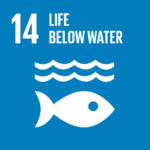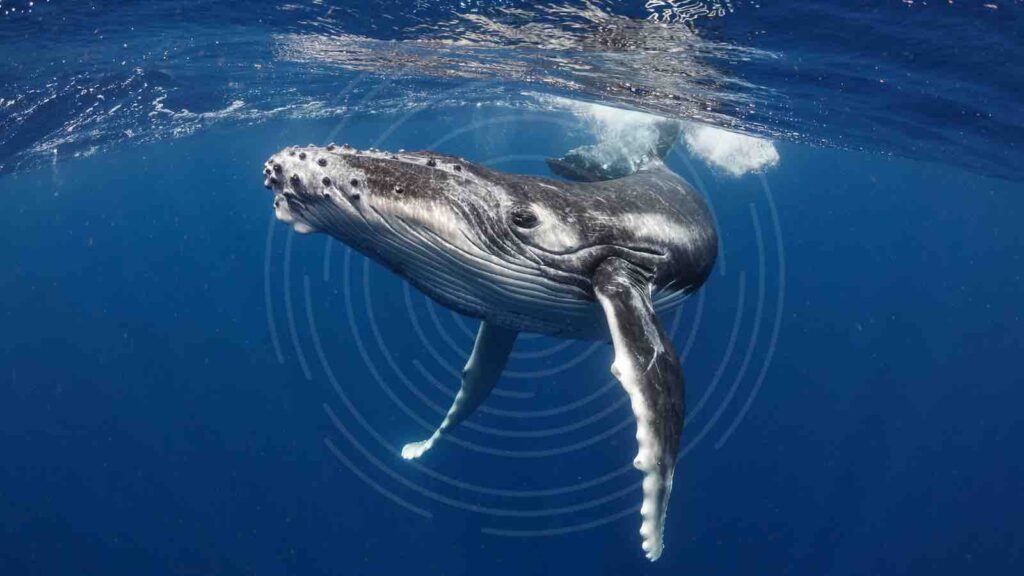Ocean noise pollution : for marine life, human noise pollution brings “death by a thousand cuts”.
The chatter of cod, the trills of bearded seals, and the symphony of humpback whales: these are the mellifluous sounds of a vibrant marine ecosystem, an underwater concert played across a range of frequencies. Yet, this melodious symphony is increasingly being drowned out by an intrusive cacophony of human-made noise, an issue that often floats under the radar of conservation policies.
RELEVANT SUSTAINABLE GOALS

Human Noise In The Ocean
Renowned sound artist Jana Winderen has journeyed from the North Pole to remote fishing villages in Thailand to capture the essence of the underwater world, only to find human noise echoing in the depths, often overpowering the whispers of smaller creatures. Winderen’s latest work, a haunting audio tableau that blends marine calls with the jarring sounds of motorboats and pile-driving, is a chilling testament to the growing issue of anthropogenic noise.
The comprehensive review recently published in Science, co-authored by Winderen and 24 other international researchers, painstakingly analyzed over 10,000 studies on the detrimental effects of human-induced noise. They found that marine animals’ behavior, physiology, and survival are all at risk due to this often-ignored form of pollution.
Carlos Duarte, the lead author of the paper and a distinguished professor at King Abdullah University of Science and Technology in Saudi Arabia, contends that noise pollution could potentially have deeper implications than plastic pollution because of its silent nature. While plastic pollution is easily visible and hence, shocking to the observer, noise pollution remains unnoticed, its devastating effects only perceived by the marine inhabitants who’ve evolved to communicate, forage, and navigate using sound.
Human noise in the ocean, which includes everything from bomb detonation to the hum of a small motorboat, disrupts these behaviors, leading to a range of impacts. These can be as subtle as a minor disruption in foraging, to as severe as mortal stranding on a beach. Duarte calls it a “chronic impact,” where a sustained exposure to noise leads to a gradual decline in the health of marine creatures.
Climate Change
Adding another layer of complexity is climate change. The melting of sea ice transforms once silent polar habitats into noisy soundscapes, with increased human activities such as shipping and fishing further exacerbating the issue.
Despite the ominous narrative, there is a glimmer of hope. The review suggests that curbing ocean noise pollution is within reach. The most immediate solution is to halt the source of the noise, with the benefit that unlike other pollutants, noise doesn’t linger in the environment. Furthermore, technological interventions, such as creating bubble barriers around construction sites or redesigning ships for quieter operation, can help minimize the racket.
What is critical now is for these noise mitigation strategies to be integrated into policy. An ocean brimming with natural sounds – the crackling of crustaceans, seal calls, whale songs, the rhythmic lapping of waves, the delicate snap of melting ice – is a healthier one. As Duarte puts it, “A healthy ocean sounds like a busy ocean, but the busyness comes from marine life, not from humans.”
The long-standing problem of underwater noise pollution isn’t a new revelation. Yet, the researchers hope that their findings will amplify awareness about this silent menace, and ignite change to restore the ocean’s natural rhythm, giving marine life a fighting chance to sing their songs once more.
You may also be interested in :
Reshark Project : Rebuilding Shark Populations By Releasing 500 Baby Sharks In Raja Ampar, Indonesia


